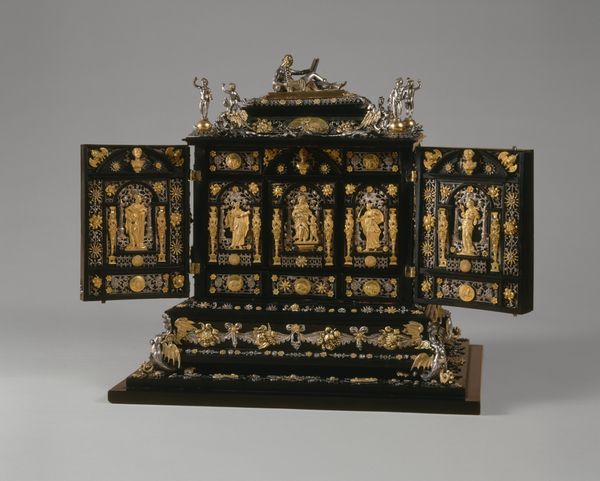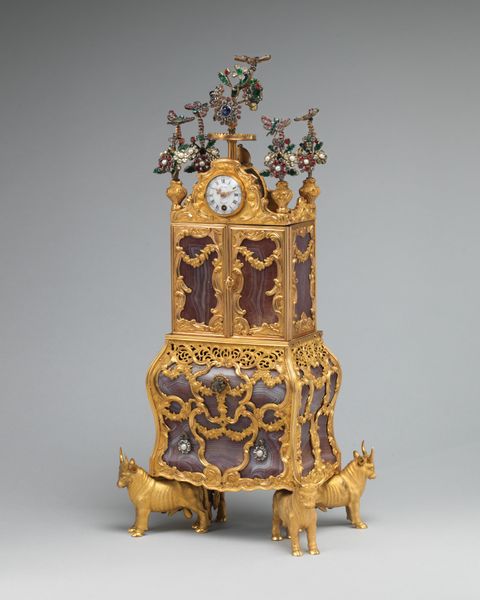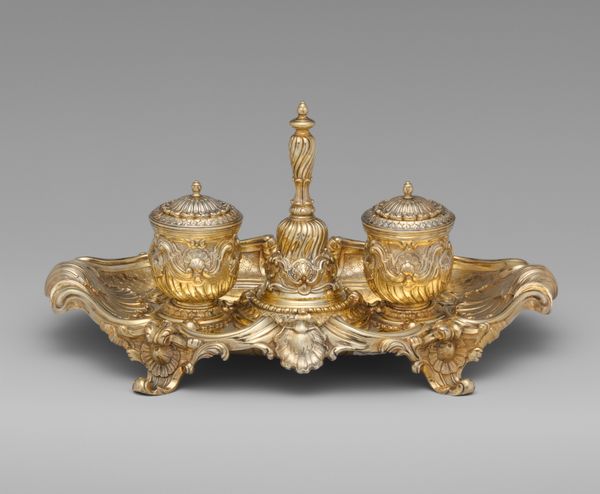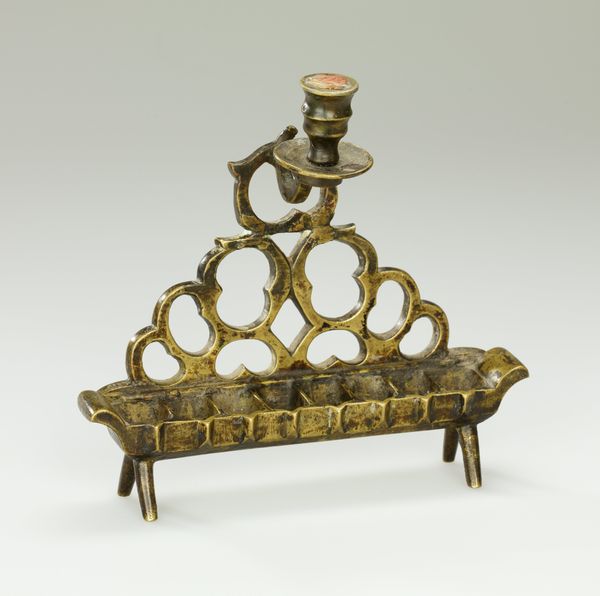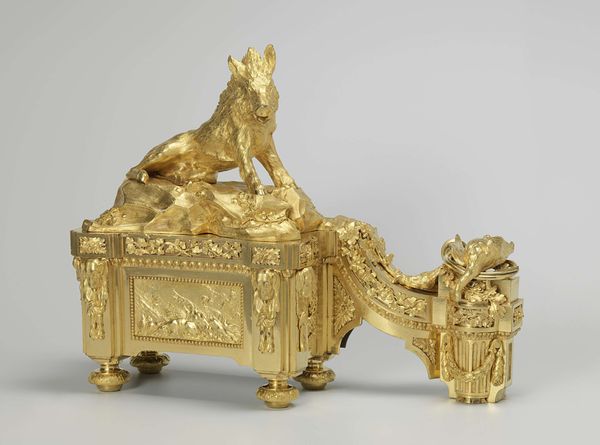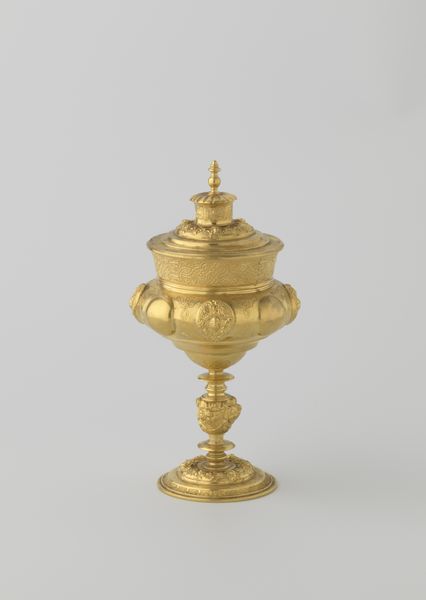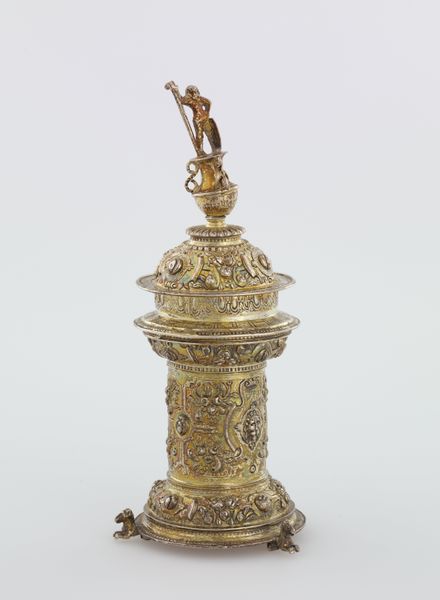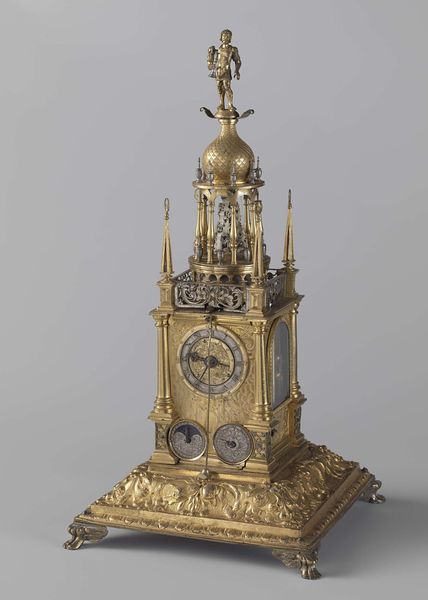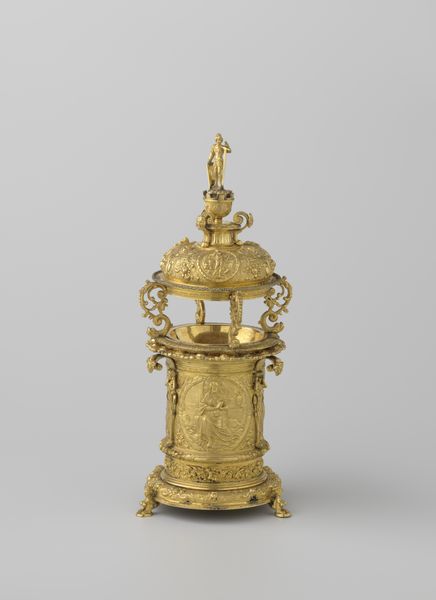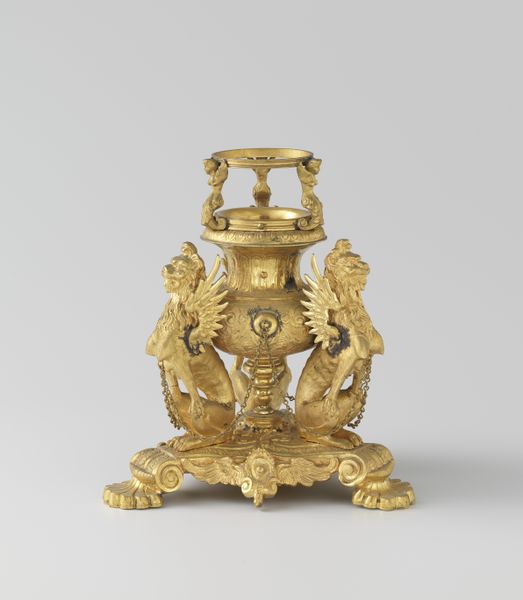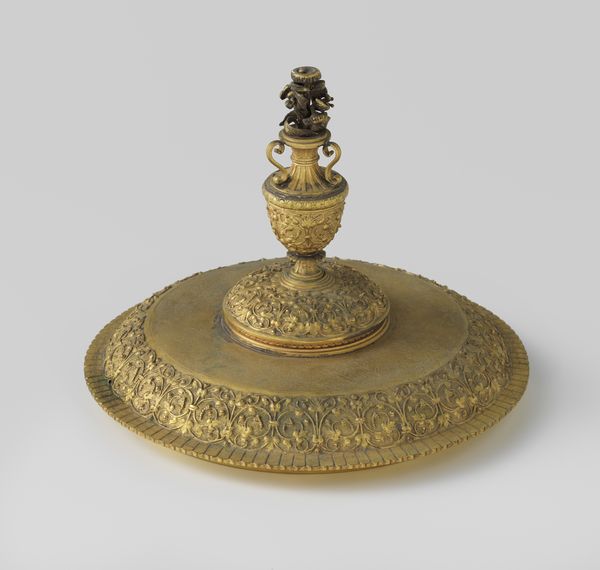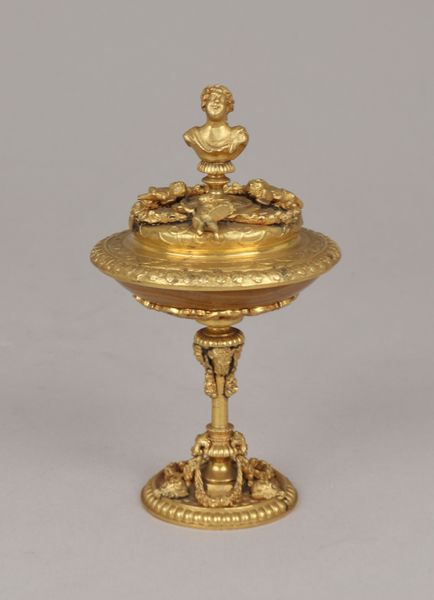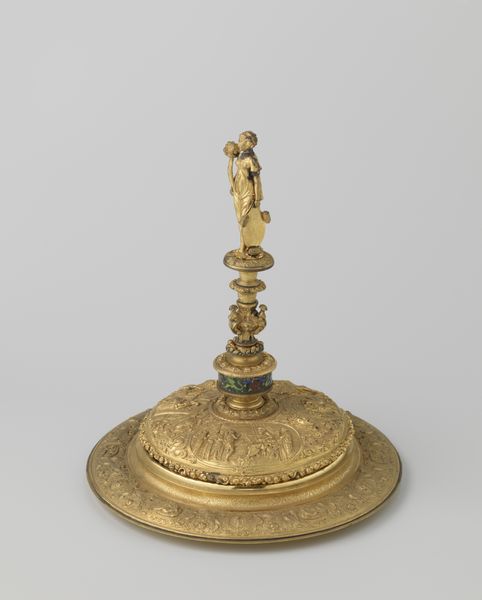
Sarira reliquary in the shape of a pavillion c. 8th century
0:00
0:00
relief, ceramic, bronze, architecture
#
asian-art
#
relief
#
ceramic
#
bronze
#
traditional architecture
#
geometric
#
decorative-art
#
architecture
Dimensions: 6 1/8 × 5 1/2 × 5 9/16 in. (15.56 × 13.97 × 14.13 cm) (without base)
Copyright: Public Domain
Curator: Here we have a sarira reliquary in the shape of a pavilion, dating back to approximately the 8th century. Editor: Wow, even in this aged state, there’s an ethereal quality to it. It looks incredibly delicate, almost weightless despite the metallic materials. Curator: Precisely! The artifact—currently residing at the Minneapolis Institute of Art—combines bronze and ceramic elements, reflecting a complex fusion of craftsmanship and spiritual meaning. It’s essentially a miniature architectural form, built to house sacred relics. The pavillion shape suggests it has deep roots in traditional Asian design. Editor: Looking at the chains and tiny ornaments, the intentionality is striking. The little dangles introduce a sense of constant motion and subtle sound, so what does the pavilion as a symbol tell us? Pavilions have long served as spaces of gathering, reflection, and connection—highlighting accessibility or exclusion, depending on the specific period and space of that time and space. Curator: Symbolically, pavilions represent both a sacred space and worldly connection, bridging the gap between humanity and the divine. The geometric cut-outs, repeated lotus motifs, and overall symmetry contribute to a layered iconography which reinforces these meditative and spiritual ideas. Consider the interplay between solid forms and void spaces as well! Editor: Yes! And, seeing that the relic resides in a designed place rather than free-standing shows how sacredness has social and constructed elements rather than being entirely pure and natural. I’m curious about the original context; where would it have been situated, and for whom? Curator: That’s the power of it. Such reliquaries were usually placed in temples or sacred sites to venerate enlightened beings. For devotees, the sight itself served as a constant reminder of mortality and encouraged a pathway toward enlightenment, while connecting viewers to something larger. Editor: It is fascinating how this small structure encapsulates vast spiritual aspirations and functions as a powerful cultural touchstone that holds these collected aspirations through time. Thank you. Curator: Indeed. It's in looking deeper at pieces like this that we understand not just artistry but the profound emotional investments cultures place in objects.
Comments
minneapolisinstituteofart almost 2 years ago
⋮
Since the early years of Buddhism in South Asia, Buddhists have enshrined funerary relics in stupas, or burial mounds. As Buddhism spread to Northeast Asia in subsequent centuries, thousands of stupas—often tower-like and dubbed “pagodas’” in the West—were constructed, each embedded with bone fragments or other relics (sarira) housed within a multi-layered reliquary. The present work is the innermost container of such a reliquary. Made of gilt bronze, it takes of the shape of a palatial building, decorated at the base with downturned lotus petals and a lavishly adorned, detachable roof. Inside is a small, lotus-shaped rest for the container that would have held the actual relics. Based on other extant Korean reliquaries from this period, the missing container was likely a glass jar or bottle. This inner reliquary would itself have been housed in a larger casket made of gilt bronze or stone and embedded within a pagoda on the precincts of a temple.
Join the conversation
Join millions of artists and users on Artera today and experience the ultimate creative platform.

